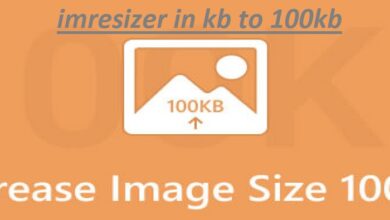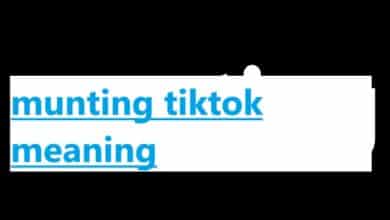Are Reverse Auctions Right for Your Business? The Role of Auction Software

Present-day business competition drives companies to find revolutionary procurement cost-cutting strategies that simultaneously preserve positive supplier relationships. Reverse auctions function as a critical strategic tool that transforms businesses to adopt new procurement methods. In a reverse auction, suppliers must engage in a bidding process that involves competitive offers to obtain business from buyers. Sophisticated auction software plays a central role in the successful implementation by managing complex transactions in this approach. This document evaluates reverse auction effectiveness for businesses, along with detailing software functions required to execute successful procurement approaches.
Understanding Reverse Auctions
The procurement method known as reverse auctions establishes an entirely new model from typical purchasing procedures. Buyers express their requirements to pre-qualified suppliers who compete through progressive price reductions within defined bidding periods to satisfy these demands. The core operation of this system focuses on combining market competition with unchanged product quality to lower acquisition expenses.
The auctioning process activates when a buyer describes their needs to chosen suppliers through a formalized invitation to participate. During the auction process suppliers observe the present lowest proposal value but remain ignorant about the identity of the bidder until they choose to reduce their bid amount. The immediate nature of supplier competition during online auctions generates savings benefits that benefit purchasing organizations.
The operation of present-day reverse auctions takes place primarily through online auction software programs. Digital tools have enabled access to reverse auction technology which provides opportunities to all businesses regardless of their size or procurement department strength.
Benefits of Implementing Reverse Auctions
Reverse auctions provide multiple benefits to organizations, despite their main attraction being cost reduction. Original studies have shown that organizations obtain between 10-20% cost savings from their first reverse auction happenings but these savings levels fluctuate depending on sector requirements and product types.
Transparency represents another significant benefit. An open bidding system shows clear market prices which removes most of the unclear elements that exist in traditional negotiation processes. Proceedings during reverse auctions establish full market price transparency that enables both suppliers and buyers to determine their position regarding competing options.
Time efficiency functions as a notable major advantage in these processes. The traditional procurement process that includes multiple proposal rounds and evaluation and negotiation stages stretches for numerous weeks up to months. A properly managed reverse auction system enables swift completion of the entire procurement process throughout several hours. The efficient process enhances both buying organizations and supply companies by decreasing the expenses related to formalized procurement activities.
When Reverse Auctions Make Sense for Your Business
The benefits of reverse auctions cannot make them suitable for every procurement scenario. The method functions most efficiently when applied to certain parameters.
To make reverse auction procurement work effectively, the procured items must possess standard specifications and well-defined requirements. The accuracy of supplier understanding, along with match functions, equates to better comparable bidding that leads to meaningful price competition. The format does not align with complex customized solutions because their specifications do not easily fit into predefined criteria.
The market needs to possess at least three qualified suppliers that have the capability to fulfill your requirements. Competitive pressure in reverse auction systems will cease to function effectively when there is insufficient supplier competition in the market. The creation of significant price pressure requires three to five active qualified suppliers based on your requirements.
Organizations should have enough purchase volume to earn supplier interest while justifying the expenditure needed to operate the auction. Each industry has a different requirement, but most suppliers seek enough possible revenue to make participation worthwhile.
Your organization needs proper technical expertise and capability to properly run the auction system. Procurement personnel need proper auction software training while the organization must spend money on suitable auction software products.
The Critical Role of Auction Software
The execution power of reverse auctions depends entirely on the quality standards of the auction software and all components within its operation. These specific types of platforms oversee all aspects of auction operations which involves supplier enrollment and classification and receiving bids and tracking alongside final award determinations.
The modern auction software market delivers several auction types as alternatives to fundamental reverse auctions.
In ranked reverse auctions, suppliers determine their place versus competitors until they view the actual price bid amounts.
The evaluation process of transformational bidding includes both price and non-price components.
Companies utilizing the feature of Multi-line Item Auctions can simultaneously conduct bidding for several products or services in one process.
The Japanese auction format brings suppliers into an auction where price points decrease through timed intervals as suppliers reveal their ongoing interest
Such e-procurement platforms feature comprehensive analytics programs that track supplier conduct and bidding tendencies and industry market changes. The gathered information enables strategic improvements in procurement planning together with supplier relationship management.
Auctions software needs to have security features which act as a vital component for system protection. The bidding process maintains integrity through secure access controls together with reliable data transmission and complete bidding process confidentiality. Advanced platforms ensure system integrity by using encryption systems with multi-factor authentication supported by extensive auditing functions.
As organizations work to enhance procurement process efficiency they require auction software with built-in integration to current procurement and ERP systems. Auction software solutions that lead the market provide customers with API connections and pre-built interfaces to enterprise systems to maintain data flow and enforcement of business procedures.
Conclusion
Sophisticated auction software enables reverse auctions that provide numerous benefits to organizations who want to improve their procurement strategies. The application of reverse auctions to specific categories under proper market conditions generates both price reductions and better processes while enhancing market visibility.
Success in reverse auction implementation requires organizations to follow a strategic process involving the evaluation of proper categories alongside proper software selection and supplier preparation combined with considering both pricing and other value elements. Strategic procurement programs integrated with reverse auctions yield organizations their highest potential value instead of treating them as an all-encompassing solution.





